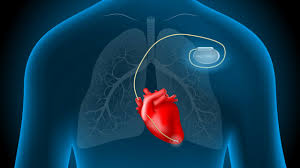
Recycled Pacemakers Offer New Hope for Patients in Low-Income Countries
For many patients in low- and middle-income countries, access to lifesaving pacemakers remains out of reach due to financial constraints. A groundbreaking program led by researchers in the United States is challenging this disparity by giving new life to used pacemakers, offering an innovative solution to address global health inequalities.
Dr. Thomas Crawford, a cardiac electrophysiologist at the Frankel Cardiovascular Center in Michigan, is spearheading this initiative, which focuses on refurbishing pacemakers that are no longer in use. “Unlike in the United States, pacemaker therapy is often not available or affordable for people in low- and middle-income countries,” Crawford explained. “Our program is determined to change that.”
At the recent American Heart Association meeting in Chicago, Crawford’s team unveiled promising results from an international trial that compared the performance of reconditioned pacemakers to brand-new devices. The study, involving nearly 300 participants across seven countries in Africa and the Americas, demonstrated that reconditioned pacemakers are just as safe and effective as their new counterparts in the initial three months following implantation.
Encouraging Results in a Life-Saving Trial
The trial randomly assigned patients to receive either a reconditioned pacemaker or a new one. The devices, implanted under the skin, deliver electrical impulses to regulate irregular heart rhythms. Researchers observed no significant differences in the functionality of the devices within 90 days of the procedure.
While three patients with reconditioned pacemakers passed away during the trial, their deaths were determined to be unrelated to the devices or the implantation process. Five patients experienced localized infections near the implant site, with three of these cases involving new pacemakers.
“These positive early results bring us closer to the reality of a large-scale pacemaker donation and reconditioning program that could save lives across the globe,” Crawford noted.
Further testing at six and 12 months will provide more definitive data on the long-term performance of refurbished pacemakers. Researchers remain optimistic, noting that reconditioned devices typically last over 10 years, depending on usage.
From Compassionate Donation to Global Impact
The My Heart Your Heart program, launched in 2010, has been at the forefront of sending refurbished pacemakers to countries where access to these devices is scarce. The program accepts pacemakers from deceased donors or from patients upgrading to more advanced devices. Only pacemakers with at least four years of battery life are considered for reconditioning, ensuring their reliability.
Once donated, the devices undergo a rigorous reprocessing and re-sterilization procedure at specialized facilities in Michigan and Connecticut. Many of the pacemakers come from funeral homes through a recycling firm that works with cemetery and crematory services.
Despite the program's success, it is illegal to implant recycled pacemakers in the United States. However, the U.S. Food and Drug Administration permits their use abroad in compassionate cases where no alternative treatment is available.
Dr. Kim Eagle, director of the Frankel Cardiovascular Center and co-leader of the study, highlighted the program’s global potential. “We have created a published roadmap, if you will, of how other centers and partners around the world can join in this most worthy cause,” he said.
While these findings are considered preliminary until published in a peer-reviewed journal, they underscore the potential for recycled pacemakers to transform cardiac care for underserved populations worldwide. As the program expands, it offers hope to countless patients in need of lifesaving heart devices, proving that compassion and innovation can bridge the gap in global healthcare access.